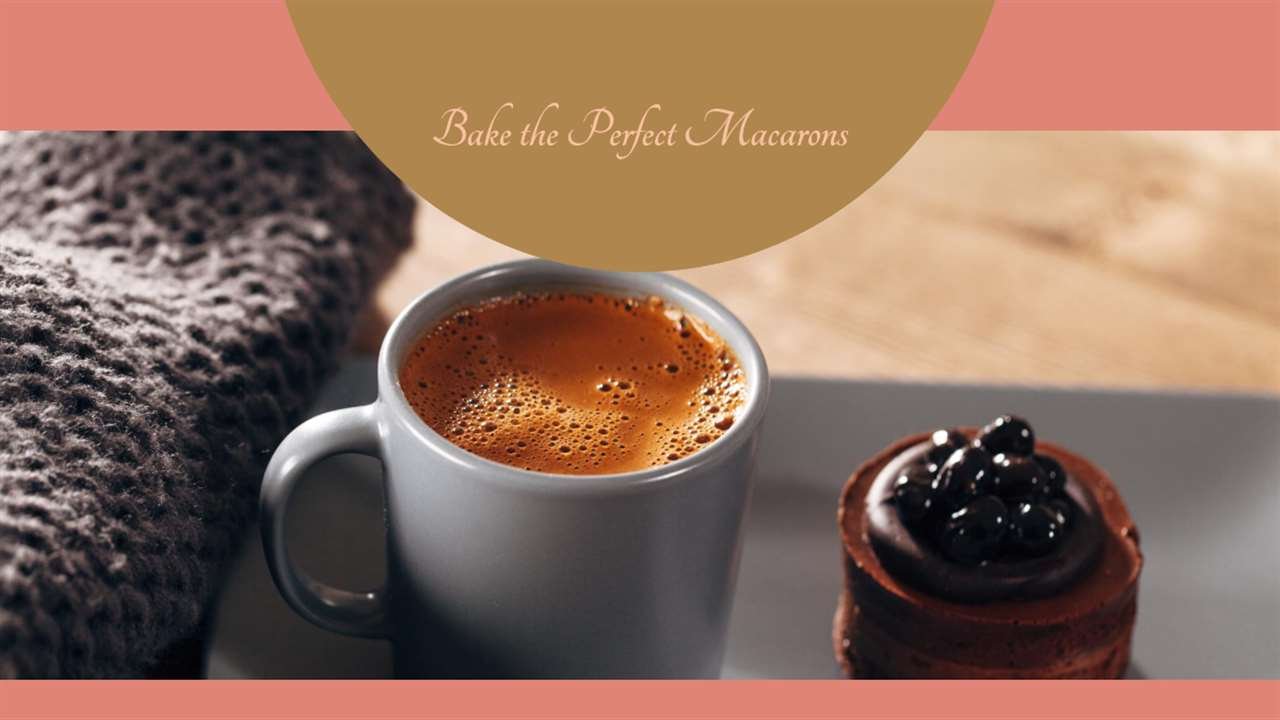Have you ever bitten into a delicate, perfectly crafted macaron and felt a symphony of flavors dance on your taste buds? If not, then it’s time to embark on a delightful journey into the world of Macarons De Nancy Recipe. In this article, we’ll explore the art and science behind creating these iconic French pastries, uncovering the secrets to achieving that coveted balance of crispy shell and melt-in-your-mouth filling.
The Artistry of Macarons De Nancy
A French Culinary Icon
Macarons De Nancy, originating from the city of Nancy in northeastern France, are renowned for their distinct characteristics. Unlike their colorful and smooth Parisian counterparts, these macarons are rustic, featuring a cracked surface that gives them a unique charm.
The Perfect Harmony
Crafting the perfect Macarons De Nancy requires an understanding of the delicate balance between textures and flavors. The crispy exterior, airy interior, and flavorful filling must harmonize to create an experience that delights all the senses.
Unraveling the Recipe: A Step-by-Step Guide
Step 1: Gathering Your Ingredients
- Almond Flour: 200g of finely ground almond flour forms the base of your macarons, imparting a nutty flavor and contributing to the signature texture.
- Powdered Sugar: 200g of powdered sugar combines with the almond flour to create the smooth texture of the macaron shell.
- Egg Whites: 3 large egg whites serve as the binder, providing structure to the macaron shell.
- Granulated Sugar: 40g of granulated sugar is used to create a stable meringue, adding sweetness and structure.
- Filling of Your Choice: Whether it’s a luscious ganache, buttercream, or fruit jam, the filling is where you can let your creativity shine.
Step 2: Preparing the Almond Mixture
- Sift and Mix: Sift together the almond flour and powdered sugar to ensure a smooth and lump-free mixture.
- Macronage: Gently fold the sifted mixture into the egg whites until you achieve a lava-like consistency. This step, known as macronage, is crucial for the texture of the macaron shells.
Step 3: Piping the Shells
- Piping Bag: Transfer the batter into a piping bag fitted with a round tip.
- Pipe Circles: Pipe small, uniform circles onto a parchment-lined baking sheet, leaving space for the macarons to spread.
Step 4: Resting and Baking
- Resting Time: Allow the piped macarons to rest for about 30 minutes to develop a skin on the surface.
- Baking: Bake the macarons in a preheated oven at 300°F (150°C) for 12-15 minutes, or until they lift easily from the parchment paper.
Step 5: Filling and Assembly
- Cooling: Allow the baked macaron shells to cool completely before filling.
- Filling: Pair up the macaron shells based on size and fill them with your chosen filling.
The Secret Ingredients: Passion and Precision
Passion in Every Fold
Making Macarons De Nancy is not just a culinary endeavor; it’s an art form that requires passion and precision. The careful folding of the almond mixture into the egg whites demands patience and love for the craft.
Precision in Measurements
The precision in measuring ingredients, especially for the macaron shell, is crucial. Accurate measurements ensure the proper balance of almond flour, sugar, and egg whites, resulting in the characteristic texture and flavor of Macarons De Nancy.
Troubleshooting Common Issues
1. Hollow Shells:
Issue: Hollow shells can be caused by overmixing the batter or insufficient resting time. Solution: Adjust your mixing technique and ensure adequate resting time to achieve the desired texture.
2. Cracked Tops:
Issue: Cracked tops may result from undermixing or rapid temperature changes. Solution: Fine-tune your macronage technique, and avoid exposing the piped shells to sudden temperature fluctuations.
3. Uneven Feet:
Issue: Uneven feet can occur if the batter is not distributed evenly during piping. Solution: Pay attention to the size and consistency of your piped circles to ensure uniform feet.
4. Sticky Bottoms:
Issue: Sticky bottoms may be due to underbaking or insufficient resting time. Solution: Extend the baking time slightly and allow the macarons to rest until a skin forms.
FAQs: Navigating the Macaron Journey
Q1: Can I use store-bought almond flour for Macarons De Nancy?
While store-bought almond flour is convenient, grinding your own almonds at home can result in a finer texture, contributing to the characteristic smoothness of the macaron shell.
Q2: How do I achieve the cracked surface typical of Macarons De Nancy?
The cracked surface is a result of the unique macaronage technique used in Macarons De Nancy. Gently folding the almond mixture into the egg whites without overmixing creates this distinctive feature.
Q3: Can I freeze Macarons De Nancy?
Yes, you can freeze unfilled macaron shells for later use. Ensure they are thoroughly cooled and stored in an airtight container to maintain freshness.
Q4: What is the best filling for Macarons De Nancy?
The choice of filling is entirely up to your preference. Traditional fillings include chocolate ganache, but you can experiment with various buttercreams, fruit jams, or curds.
Q5: How do I store finished Macarons De Nancy?
Store your filled macarons in an airtight container in the refrigerator. Bring them to room temperature before serving for the best flavor and texture.
Conclusion: Macarons De Nancy Recipe
In conclusion, mastering the art of Macarons De Nancy is a journey that combines precision, passion, and a touch of creativity. As you embark on this culinary adventure, remember that each crack on the surface tells a story of careful folding, patient resting, and a love for creating something truly special. So, gather your ingredients, embrace the process, and savor the sweet rewards of perfect Macarons De Nancy – a delightful symphony of flavor and texture in every bite.
For more ideas, recipes, and cooking tips and tricks, please visit us at Lees Donut Shop.

